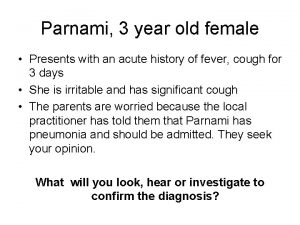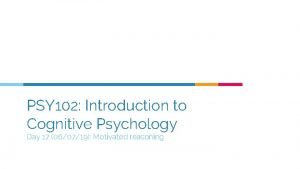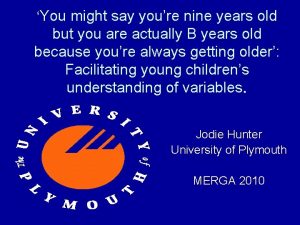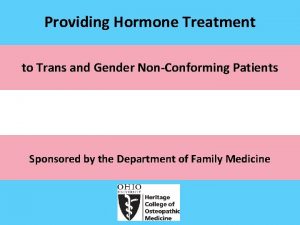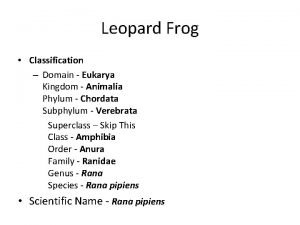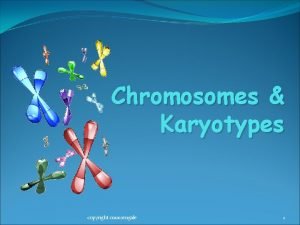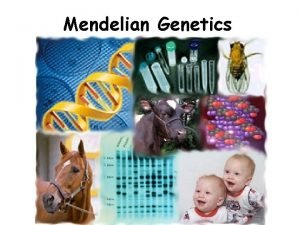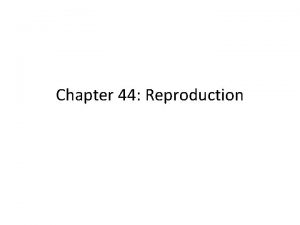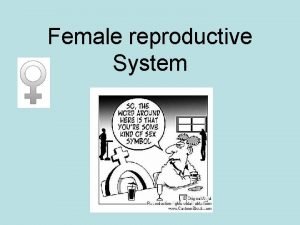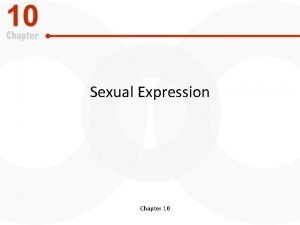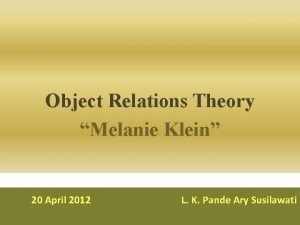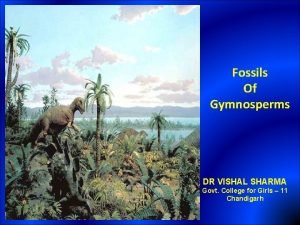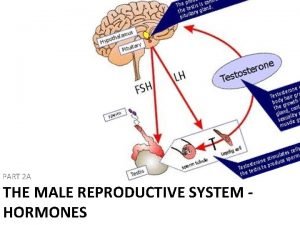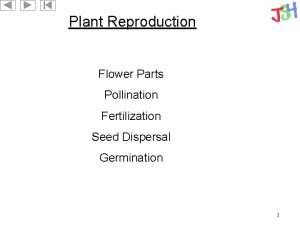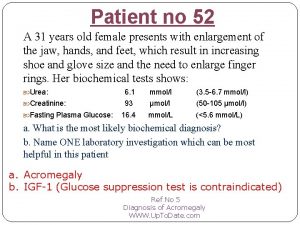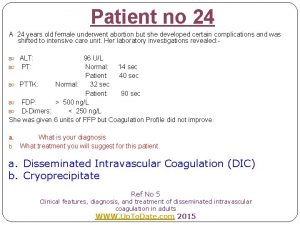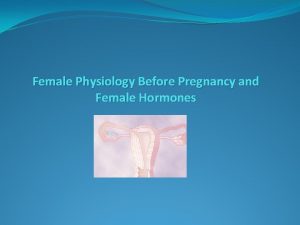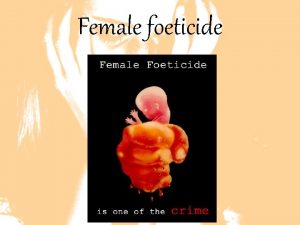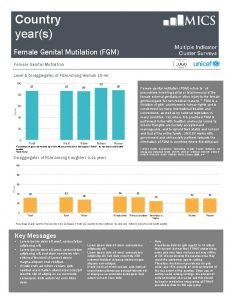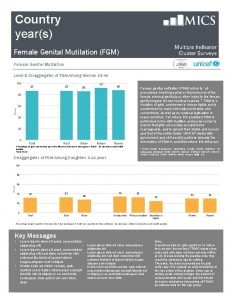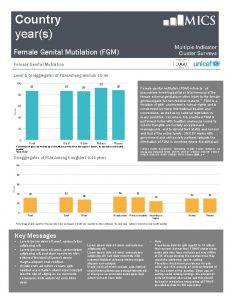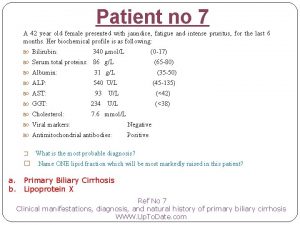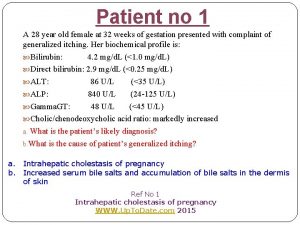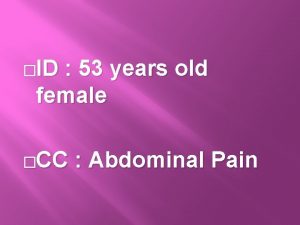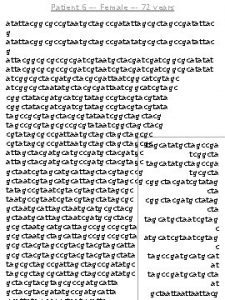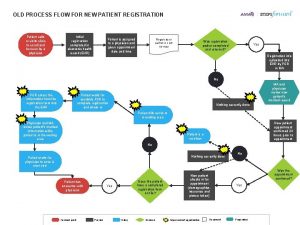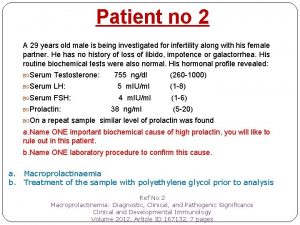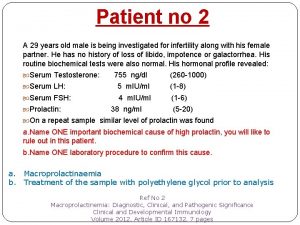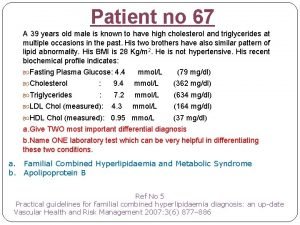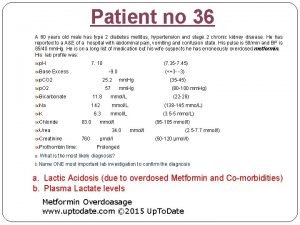Patient no 5 A 29 years old female





































- Slides: 37

Patient no 5 A 29 years old female presented with complaints of fatigue, lethargy and frequent thirst. She has been having episodes of hypotension as well. Her BMI is 23 kg/m 2. Pigmentation is seen in the palmar creases and the buccal mucosa She has a small diffuse goiter. Her lab investigations are as follows: Plasma Glucose fasting: 15. 3 mmol/L Serum Na: 123 mmol/L Serum K: 6. 0 mmol/L Serum Ca: 2. 38 mmol/L (2. 10 -2. 65) Serum Cortisol (0800 h): 2 (10 -25 ng/ml) Plasma ACTH (0800 h): 1650 pg/m. L(10 -50) Serum TSH: 38 m IU/L (0. 4 -4. 5) a. What is the most likely diagnosis? b. Name TWO hormones you will like to test in this patient a. Polyglandular autoimmune syndrome type II (Schmidt Syndrome) b. FSH and LH Causes of Primary Adrenal Insufficiency www. uptodate. com © 2015 Up. To. Date

Polyglandular Autoimmune Syndromes Polyglandular autoimmune syndrome type I Ø Adrenal insufficiency Ø Hypoparathryoidism Ø Candidiasis Ø Hypogonadism Ø GI disorders Polyglandular autoimmune syndrome type II (Schmidt Syndrome) Ø Adrenal insufficiency Ø Hypogonadism, D. M Ø Hypopitutarism , hypothyroidism Ø Other nonendocrine autoimmune disorders Important Differentiating Points between the two: Ø No Hypoparathryoidism and Candidiasis in type II

Patient no 6 A 45 years female complains of episodes of headache, sweating, and tachycardia. She also describes that these attacks are accompanied by high blood pressure but there is no documentation. Her BMI is 22 Kg/m 2. Her routine biochemical profile shows: Glucose (F): 6. 9 mmol/L (<5. 6) Na: 138 mmol/L (132 -144) K: 4. 6 mmol/L (3. 2 -4. 8) Urea: 4. 3 mmol/L (3. 6 -6. 7) ALT: 29 U/L (< 42) To further investigate her Impaired Fasting Glucose, she underwent OGTT which showed 2 hours post-challange value as 7. 4 mmol/L. a. What is the most probable diagnosis? b. Name TWO tests available in the state-of-the-art laboratories to confirm the diagnosis? a. Pheochromocytoma (or Paraganglionoma) b. Urine Catecholamines and Normetanephrine Pheochromocytoma www. uptodate. com © 2015 Up. To. Date

Pheochromocytoma Classic Triad The classic triad of symptoms in patients with a p heochrom ocytoma consists of episodic headache, sweating, and tachycardia. About half have paroxysmal hypertension Urine Tests: Diagnosis of these tumours are made if one or more of following urine tests are positive: Ø Norepinephrine >170 mcg/24 hour Ø Epinephrine >35 mcg/24 hour Ø Dopamine >700 mcg/24 hour Ø Normetanephrine >900 mcg/24 hour or metanephrine >400 mcg/24 h our Plasma Tests: Plasma fractionated metanephrines is now recommended by some recent studies. These tests carried out on LC/MS/MS have high sensitivity and negative predictive value

Differentiating Pheochromocytoma and Paraganglionoma Pheochromocytomas and paragangliomas are neuroendocrine tumors arising from adrenal and extraadrenal chromaffin cells, respectively. Adrenal tumors (50%) produce a mixture of norepinephrine and the other half nearly exclusively norepinephrine or in occasional cases norepinephrine and dopamine. In contrast, paragangliomas of the thorax, abdomen, and pelvis rarely produce significant amounts of epinephrine, with most producing solely norepinephrine, others a combination of norepinephrine and dopamine, and some exclusively dopamine. Clinical Chemistry 60: 12 1486– 1499 (2014)

Patient no 7 A 48 years female has hypertension, the cause of which is being investigated. Her pulse is 78/min and there are no episodes of tachycardia and sweating. Her biochemical investigations revealed: Na 143 mmol/L (138 -145) K 4. 2 mmol/L (3. 5 - 5. 0) Chloride 101 mmol/L (95 -105) Plasma Aldosterone : 339 pmol/L (272 -421) Active Renin Mass Concentration (ARC): 21. 2 ng/L (10. 1 – 12. 4) Aldosterone: ARC Ratio : 38. 2 (37. 6 -41. 2) a. b. Which type of hypertension she is most probably suffering from? Name the disease which is clearly ruled out as a cause of her hypertension. a. Essential Hypertension b. Primary Hyperaldosterone Ref No 7 François Corbin, Pierre Douville, Marcel Lebel Active renin mass concentration to determine aldosterone to renin ratio in screening for primary aldosteronism International Journal of Nephrology and Renovascular Disease 2011: 4 115– 120

Aldosterone Renin Ratio Active Renin Mass Concentration (ARC) is a better indicator of Renin as compared to previously used Plasma Renin Activity Aldosterone to Renin (ARR) ratio based on ARC is now used Recommended ARR cut-off for Primary Aldosteronism : > 130 pmol/ng Essential Hypertention : < 100 pmol/ng

Patient no 8 A 4 month old male infant presented with irritability and failure to thrive. On examination, he was having tachycardia, dryness of mucus membranes and decreased skin turgor. His laboratory investigations revealed: Plasma Glucose 4. 6 mmol/L Serum creatinine 30 umol/L Serum Sodium 121 mmol/L Serum Potassium 6. 0 mmol/L Serum Bicarbonate (4 29) (136 149) (3. 5 5. 0) 15 mmol/L (22 28) Serum Chloride 99 mmol/L (98 107) Serum 17 OH progesterone 2. 2 nmol/L (0. 1 2. 7) Serum Cortisol 575 nmol/L (80 580) Plasma Aldosterone 56 pmol/L (140 849) a. What is the most probable diagnosis? b. Name the most probable biochemical defect a. Congenital Isolated Hypoaldosteronism (Type IV RTA also acceptable) b. Aldosterone synthase (P 450 c 11 as) Deficiency Ref No 2 Etiology, diagnosis, and treatment of hypoaldosteronism (type 4 RTA) www. uptodate. com © 2015

Hypoaldosteronism Characterized by: Hyperkalaemia Hponatraemia (in young children) Mild Metabolic Acidosis (hyperchloraemic) Congenital Isolated Hypoaldosteronism: In children, hypoaldosteronism can result from a congenital defect e. g. deficiency of aldosterone synthase (P 450 c 11 as)

Patient no 9 An 18 years old female presented with the complaints of irregular menstruation and hirsuitism. This problem is present for four years but becoming worse for the last one year. Her lab investigations revealed: FSH: 21. 1 m. IU/ml (1. 4 -9. 9) LH: 19. 3 m. IU/ml (1. 7 -15) Prolactin 20 ng/ml (3. 8 -23. 0) Testosterone 24. 8 ng/dl (0. 6 -5. 0) DHEAS 15. 3 umol/L (1. 2 - 11. 0) 17 -hydroxyprogesterone (Basal): 13. 0 nmol/L 17 -hydroxyprogesterone (30 min after synacthen injection): 272 nmol/L a. What is the most probable diagnosis? b. Give TWO other Differential Diagnoses. a. Late onset congenital adrenal hyperplasia (CAH) b. (1) Polycystic Ovary Syndrome (PCOS) (2) Androgen secreting adrenal tumour Ref No 4 Diagnosis and treatment of nonclassic (late onset) congenital adrenal hyperplasia due to 21 hydroxylase deficiency www. Up. To. Date. com

Late-onset CAH Interestingly it is more common than ‘Classical Variety’ (see ref) In this patient basal level of 17 OH progesterone was quite high and indication of Synacthen Test was challenged by some (intelligent!) trainees. In adults it can be done to confirm diagnosis (see ref). However, one really wonders why this girl did not present at an early age but then in

Patient no 10 An XX female neonates has clitoral enlargement with labial fusion. She has hypertension Her biochemical picture shows: p. H: 7. 46 (7. 35 -7. 45) PCO 2: 40 mm. Hg HCO 3: 30 mmol/L (23 -28) PO 2: 103 mm. Hg (80 -110) Na : 146 mmol/L (135 -150) K : 2. 2 mmol/L (3. 5 -5. 0) Cl : (35 -45) 101 mmol/L (98 -106) DHEA-S: Raised Testosterone: Raised a. What is the most probable diagnosis? b. Name TWO steroid metabolites which are raised in this condition. a. 11 B dehydroxylase deficiency 11 deoxycortisol and 11 deoxycorticosterone, Ref No 7 Congenital adrenal hyperplasia due to 11 beta hydroxylase deficiency WWW. Up. To. Date. com 2015

11 -B dehydroxylase deficiency CYP 11 B 1 (or 11 -beta-hydroxylase) deficiency is the second most common cause of congenital adrenal hyperplasia after 21 -Hydroxylase def. Two Cardinal Presentations: Virilization of female neonate Hypertension Biochemical Findings: High serum concentrations of 11 -deoxycortisol, 11 deoxycorticosterone, and dehydroepiandrosterone sulfate (DHEA sulfate), androstenedione, and testosterone. 13 9/17/2020

Patient no 11 A 48 years old male presents in A&E of a hospital with weakness in all four limbs. On examination he was found to be having high blood pressure (185/105 mm. Hg). He confesses intake of malathi (Licorice) for the last a few weeks as a medicine. His lab investigations showed following important findings: Serum Sodium : 149 mmol/L (132 -144) Serum Potassium : 2. 6 mmol/L (3. 5 -5. 0) Urinary Calcium : 380 mmol/mol of Creat (565) Plasma active renin mass conc 3. 45 ulu/ml (8 -35) Plasma aldosterone 1. 6 ng/dl (1 -16) Aldosterone: Renin Ratio: 0. 46 24 h Urine cortisol : cortisone ratio 0. 02 a. What is the most probable diagnosis in this patient? b. What is the most important biochemical cause of this condition? a. Apparent Mineralocorticoid Excess due to licorice ingestion b. Deficiency of 11 beta hydroxysteroid dehydrogenase type 2 (11 Beta HSD 2) Ref No 3 Apparent mineralocorticoid excess syndromes (including chronic licorice ingestion) WWW. Up. To. Date. com 2015

Apparent Mineralocorticoid Excess due to licorice ingestion The syndrome of apparent mineralocorticoid excess (AME) is characterized by hypertension, hypokalemia, metabolic alkalosis, low plasma renin activity and low plasma aldosterone levels Chronic ingestion of licorice or licorice like compounds (such as carbenoxolone) induces a syndrome with similar findings. The basic defect is inhibition of enzyme 11 beta hydroxysteroid dehydrogenase type 2 (11 Beta HSD 2) which is the renal form of 11 Beta HSD).

PFD Patient No 3 Name Urine Tests which can helpful in differentiating Licorice Ingestion from genetic causes of AME (if history of licorice ingestion is not obvious)? How Renin Angiotensin Aldosterone (RAAS) can help distinguishing AME from Primary Hyper aldosterone?

PFD Patient No 4 How can you differentiate Primary Hyperaldosterone from GS clinically and biohemically.

Patient no 12 A newborn was noted to have bilaterally palpable testes and Grade IV hypospadias in a Children Hospital of USA. There was no other clinical abnormality found. His karyotyping showed XY chromosome while results of steroids were as following: 17 -Hydroxyprogesterone: Markedly raised 17 -Hydroxypregnenolone : Markedly raised DHEA-S: Raised Testosterone after HCG stimulation test: 196 (Normal response: 980) a. What is the most probable diagnosis? b. Name the enzyme which is most likely deficient in this neonate. a. CAH b. 3 Beta Hydroxysteroid dehydrogenase (3 Beta HSD) Ref No 9 Elevated 17 Hydroxyprogesterone and Testosterone in a newborn with 3 Beta Hydroxysteroid dehydrogenase deficiency. NEJM 1985; 313(10): 618 621

CAH due to 3 Beta HSD Deficiency A rare form CAH (consultants are mainly required for rare diseases!!) It can present as ambigous genitalia in both XX and XY neonate Sub optimal response to HCG stimulation test rules out AIS. 3 Beta HSD is an adrenal enzyme while 3 Beta HSD 2 is a renal enzyme 3 beta HSD is required for the normal synthesis of adrenal hormones proximal to the enzyme 21 hydroxylase. This result in marked elevation of 17 Hydroxypregnenolone. 11 deoxicortisol remains normal

PFD Patient No 9 Why 17 Hydroxyprogesterone (17 OHP) is raised in this condition in spite of the fact that the biochemical defect is proximal to the level of 17 OHP synthesis? ? Sub-optimal response to HCG stimulation test rules out AIS but why there is a sub-optimal response in this condition.

Patient no 13 A 50 years old female was admitted in hospital with two weeks history of generalized weakness and feeling of being unwell. On examination she had hypertension (180/90), generalized edema, hepatomegaly, widespread skin pigmentation and scaly red plaques on her back and legs. Her lab investigations revealed: Serum sodium : 147 mmol/l (132 -150) Serum potassium : 2. 1 mmol/l (3. 5 -5. 0) Serum creatinine : 110 μmol/l (60 -120) Plasma glucose (F) : 16. 4 mmol/l (3. 3 -5. 5) Serum cortisol : > 1600 nmol/l (140 -690) Serum ACTH : pmol/L (4. 4 to 11. 3) High dose Dexamethasone suppression test was done: 45. 4 Date Time (h) Serum cortisol (nmol/l) 26/8 0800 1580 26/8 2300 -8. 0 mg Dexamethasone dose given 27/8 0800 1570 a. What is probable diagnosis? b. Name TWO causes of this condition a. Cushing syndrome due to ectopic ACTH secreting tumors b. Tumors of lung, pancreas, colon Ref No 2 Establishing the cause of Cushing's syndrome WWW. Up. To. Date. com 2015

Patient no 14 A 41 years old male underwent bilateral adrenalectomy for Cushing Syndrome. He was taking glucocorticoid replacement therapy but after two years he developed headaches, visual field defects, and pigmentation on wide areas of the body. His hormonal profile revealed: Plasma ACTH Level (11 pm): 3420 pmol/L (1. 1 - 4. 4) a. What is most probable diagnosis? b. What is the most likely cause of pigmentation in this patient? a. Nelson Syndrome b. Excess ACTH secretion Ref No 3 Nelson Syndrome: Background, Pathophysiology, Epidemiology WWW. Medscape. com 2015



PFDs for Patient No 2 & 3 Name ONE biochemical ratio which can be used to differentiate ectopic ACTH from Pituitary origin of ACTH b. CRH stimulation test is used to determine the cause of Cushing Syndrome. How it differentiates adrenal, pituitary and non pituitary causes. c. If CRH is not available (as in our set up), which hormone can be be used for this purpose (available in Pakistan). d. How can we differentiate Nelson Syndrome and Cushing Disease on the basis of ACTH secretory pattern? a.

Patient no 15 A 32 years old female presented with hirustism and amenorrhea and weight gain. Her lab investigations showed: Plasma testosterone: 7. 7 nmol/L (0. 9 -3. 6) DHEAS: 13. 6 μmol/L (1. 2 -11. 0) 24 h urinary free cortisol: 1740 nm 0 l/L (<300) a. What is the most probable diagnosis? b. Name ONE further investigation you will like to carry out in this patient a. Adrenal Tumour b. High Dose Dexamethasone test Ref No 2 Clinical presentation and evaluation of adrenocortical tumors www. Up. To. Date. com

Hormonal Changes in Adrenal Tumours In addition to the raised cortisol and low ACTH, most of the adrenal androgens are also raised e. g. testosterone, DHEA S, androstenedione, and 17 OH progesterone Adrenal carcinomas are notorious in producing hormone precursors in plasma and urine of the patient, which

Patient no 16 An 18 years old female presents in A&E of a hospital with weakness in all four limbs. On examination her blood pressure was 185/105 mm. Hg. Her brother aged 16 years is also hypertensive. Her lab investigations were Na 143 mmol/L (138 -145) K 2. 9 mmol/L (3. 5 - 5. 0) Chloride 93 mmol/L (95 -105) Bicarbonate 36 mmol/L (23_33) Plasma aldosterone 2. 1 ng/dl (3 -16) Active Renin Mass Concentration (ARC): 3. 8 m. IU/L (8 -35) a. What is the likely diagnosis? b. What is basic underlying defect? a. Liddle´s syndrome (or Apparent Mineralocorticoid Excess) b. Caused by hyperactivity of the epithelial sodium channel or ameloride sensitive sodium channels (ENa. C) of the cortical collecting tubule Ref No 5 Genetic disorders of the collecting tubule sodium channel: Liddle's syndrome and pseudohypoaldosteronism type 1 (Pleas see highlighted part) www. Up. To. Date. com

Liddle Syndrome This syndrome is characterized by: Hypertension in young age Hypokalaemia Low renin and aldosterone It is a ‘gain of function’ mutation in the gene encoding ENa. C of the collecting tubule resulting in autonomous function of these channel without the influence of aldosterone Can be differentiated from Primary Hyperaldosteronism by normal Na level and low aldosterone and renin

Apparent Mineralocorticoid Excess (AME) AME is due to deficiency in the 11 beta hydroxysteroid dehydrogenase enzyme type 2 isoform (11 beta HSD 2), which is the kidney isoform of 11 beta HSD This enzyme is required for conversion of cortisol to cortisone. Excess of cortisol exerts mineralocorticoid activity Urinary free cortisone levels are very low or undetectable, so the ratio of cortisol to cortisone is very high.

Differentiating AME from Liddle AME has almost similar presenting features as Liddle i. e. Hypertension in young age, Hypokalaemia and Low renin and aldosterone In AME, the ratio of cortisol to cortisone in urine is 5 while it is normal in Liddle (0. 3 to 0. 5) Two other important differential diagnosis of AME can be: o Licorice ingestion o Ectopic ACTH syndrome

Patient no 20 A 7 years old male reported in an Endocrine Clinic with early appearance of secondary sexual characteristics, facial, axillary and pubic hair, phallic enlargement, voice change and rapid increase in height. His Hormonal investigation revealed: TSH 2. 96 m. IU/L (0. 4 - 4. 0) Cortisol (0800 h) 190 nmol/L (138 -690) ACTH (0800 h) 499 pg/ml (10. 0 -85. 0) LH < 0. 07 m. IU/ml (1. 0 -3. 5 l) FSH <1 m. IU/ml (0. 0 - 5. 0) 17 Hydroxy Progesterone 4. 95 ng/ml (0. 03 -0. 90) Testosterone 222 ng/dl (3. 0 -30. 0) a. Name the most probable cause of precocious puberty in this patient. b. Write TWO more causes of similar clinical condition in boys of this age group (ignoring hormonal results). a. CAH due to 21 hydroxylase deficiency (Both classical and non classical) b. Central variety and CNS diseases Ref No 9 Genetics and clinical presentation of nonclassic (late onset) congenital adrenal hyperplasia due to 21 hydroxylase deficiency www. uptodate. com 2015

Precocious Puberty in Males In this patient its due to 21 hydroxylase deficiency In males, difficult to differentiate between ‘Classical’ and ‘Late onset’. Other causes include: Central due to brain lesions Pituitary Adrenal

Patient no 21 A 21 years old male was diagnosed to be a case of Addison`s Disease on the basis of clinical features and laboratory findings (i. e. low cortisol and increased ACTH). He is on replacement therapy and clinically much improved but his recent hormonal profile indicates: Cortisol : < 5 nmol/L ACTH: 87 pg/ml < 120 a. What is the most probable cause of this discrepancy (analytical error excluded)? b. What advice you will like to give to the treating physician? a. Patient is on prednisolone or dexamethasone which do not cross react with cortisol b. As a short term treatment patient may be treated with hydrocortisone and monitored with cortisol Ref No 6 Treatment of Adrenal insufficiency in Adults www. uptodate. com © 2015

Patient no 22 A 55 years old female is being investigated for Cushing Syndrome. She has following lab results: Serum Cortisol in overnight 1 mg dexamethasone suppression test: 35 nmol/L (Normal Cut-off value: <50 nmol/L) Urine free cortisol: 230 nmol/day (ref range: 27 to 150) a. Write TWO causes of this discrepancy. (Please note that altered CBG and ‘Pseudo-Cushing's Syndrome’ have already been ruled out in this patient) b. Name third First Line Test you will like to carry out in this patient. a. Inappropriate urinary output and local (Vaginal) hydrocortisone treatment b. Late evening salivary cortisol Ref No 9 Establishing the diagnosis of Cushing Syndrome www. uptodate. com © 2015

Patient no 23 A 6 years old patient presented in an Endocrine Clinic with labial fusion but absent testes. Patient had dark pigmentation and grown up beard on the face. Height of the patient was at 93 rd percentile. Lab investigations revealed: Karyotyping: 46 XX 17 Hydroxyprogesterone: 46. 2 nmol/L (0. 5 7. 2) Serum Cortisol (0800 h): 187 nmol/L (138 634) Plasma ACTH: 87 pmol/L (<26) a. What is the most probable diagnosis? b. Write the exact biochemical defect a. Heterosexual precocious puberty b. CAH due to 21 hydroxylase deficiency Ref No 7 Precocious Puberty Book Chapter https: //www. glowm. com/resources/glowm/cd/pages/v 5 c 016. html 36

Heterosexual Precocious Puberty • Precocious Puberty is a manifestation of CAH in male. • In XX persons CAH presents as ambiguous genitalia • But in some XX the genitalia may appear normal and the diagnosis is missed at this age. • In later age these patients may present with signs of excessive androgens i. e. excessive facial hair and other male features • High ACTH keeps cortisol within reference limits by enlarging the adrenals • High ACTH may cause pigmentation
 300 solar years to lunar years
300 solar years to lunar years Four scores and seven years ago
Four scores and seven years ago Goat years to human years
Goat years to human years Patient 2 patient
Patient 2 patient A 26 year old female presents
A 26 year old female presents Hello
Hello Xxxbritt
Xxxbritt Greert vinck is 29 years old
Greert vinck is 29 years old How did judas die
How did judas die Despite being thousands of years old
Despite being thousands of years old Lydia is 48 years old single outspoken and very bright
Lydia is 48 years old single outspoken and very bright Hello song peter weatherall
Hello song peter weatherall Diversion program under ra 9344
Diversion program under ra 9344 Under 15 years old
Under 15 years old New years old is new again
New years old is new again Are you nine years old
Are you nine years old Saki sredni vashtar
Saki sredni vashtar Once upon a time there lived an old woman this old woman
Once upon a time there lived an old woman this old woman What's your name? how old are you?
What's your name? how old are you? Once upon a time there lived an ant and a butterfly
Once upon a time there lived an ant and a butterfly Once upon a time there lived an old man and an old woman
Once upon a time there lived an old man and an old woman Jonas maines
Jonas maines External nares of frog
External nares of frog Ge aviation female diversity recruitment leadership summit
Ge aviation female diversity recruitment leadership summit Normal chromosomes
Normal chromosomes Female inguinal hernia anatomy
Female inguinal hernia anatomy Colorblind punnett square
Colorblind punnett square Iron deficiency anemia diagnosis
Iron deficiency anemia diagnosis Female organs
Female organs Female reproductive system colour
Female reproductive system colour Common female sexual fantasies
Common female sexual fantasies Male vs female praying mantis
Male vs female praying mantis Female oedipal development klein
Female oedipal development klein Williamsonia diagram
Williamsonia diagram What are primary sexual characteristics
What are primary sexual characteristics Parts of flower
Parts of flower Flywhisk meaning
Flywhisk meaning In mrs tilscher's class analysis higher english
In mrs tilscher's class analysis higher english




